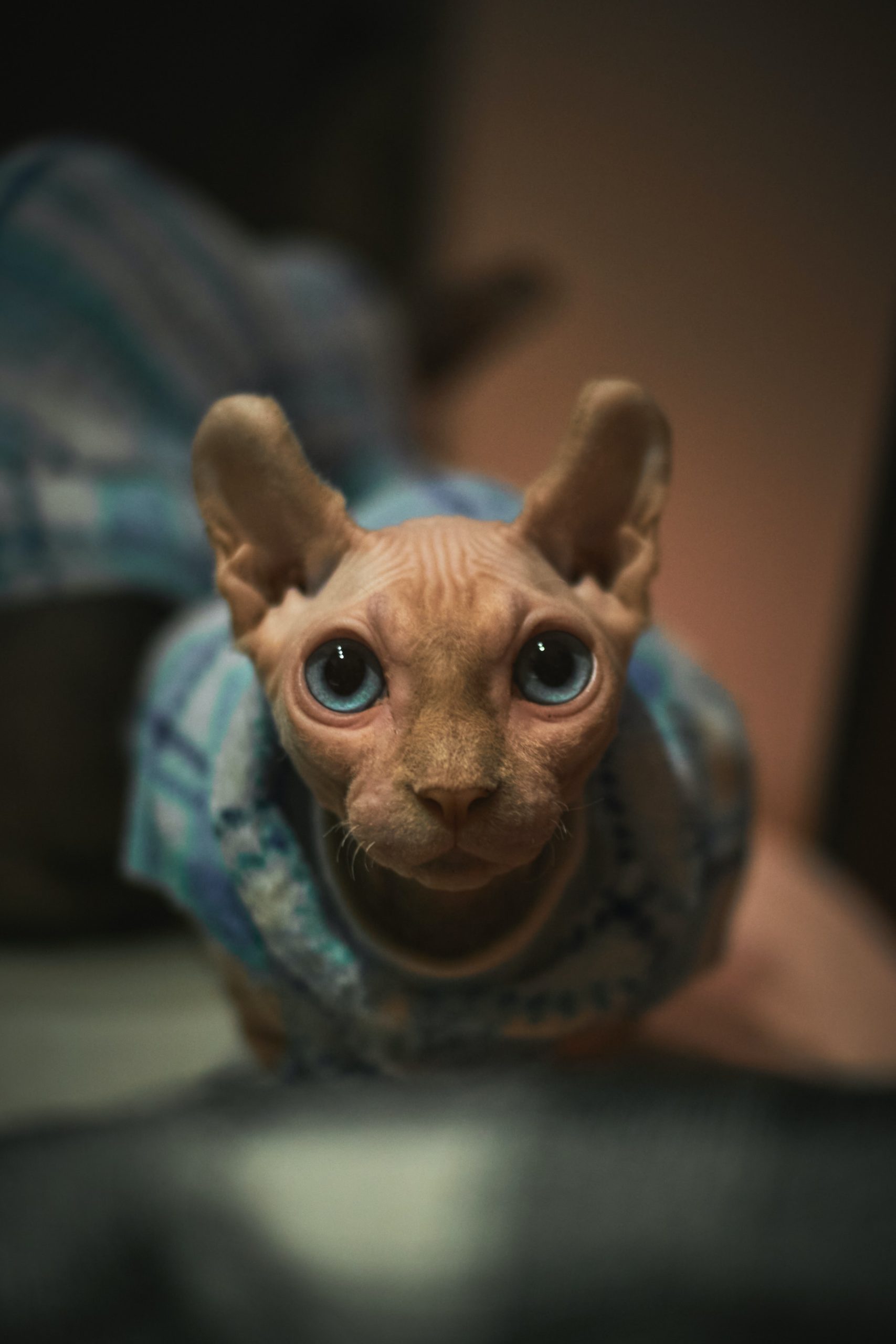
The sphynx cat attracts the curiosity of many people. Indeed, it presents a particularity that distinguishes it from the other races; it is deprived of hairs. This characteristic can attract some people. However, before deciding to share his life with a sphynx, it is interesting to learn about their characteristics; the absence of fur is not the only thing that defines them! So let’s see together in more detail how these very particular cats are defined.
1. History of the Sphynx Cat
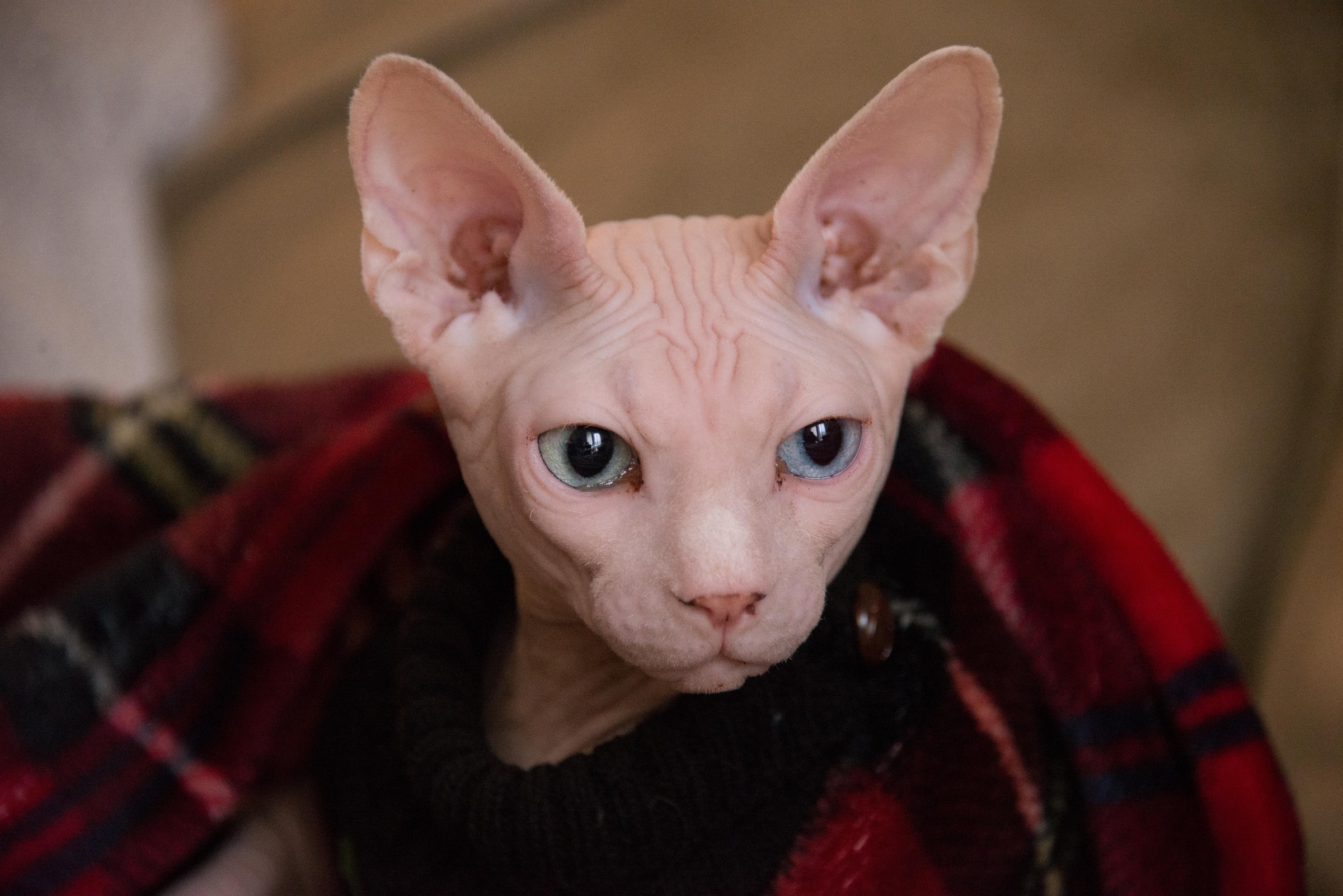
The sphynx is a recent breed; it first appeared in Canada in the 60s. The first sphynxes are kittens from a “normal” cat. At their birth, they naturally had no hair due to a genetic mutation. The Dutch doctor, Hugo Hernandez, then recovers two cats carrying the gene and works then to produce other naked cats. Its current price is relatively high, ranging between 900 and 3000dollars for a kitten.
Physically, cat experts define the sphynx as a cat of average size, with a broad and rounded skull and high cheekbones. Its muzzle is short and without whiskers, and the nose must present a “stop”. Their ears are large, wide, and set low. Its eyes are large, lemon-shaped, and can have all the colors: blue, gold, green, they can be various. The body of the sphynx is firm, with a compact and powerful musculature taking shape on a fine bone structure. Its tail is naked, reminding a rat tail.
Finally, the skin of the sphinx can be completely naked or covered with a delicate down-like peach skin with small tufts of hair at the level of the nose, the outside of the ears, and on the end of the legs. Finally, one can notice the presence of folds and wrinkles on the forehead, the muzzle, the chin, and the legs. In general, kittens are much more wrinkled than adults; the latter should keep as many folds as possible without affecting their health. Finally, all colors are accepted within the breed.
2. Character of the Sphynx Cat
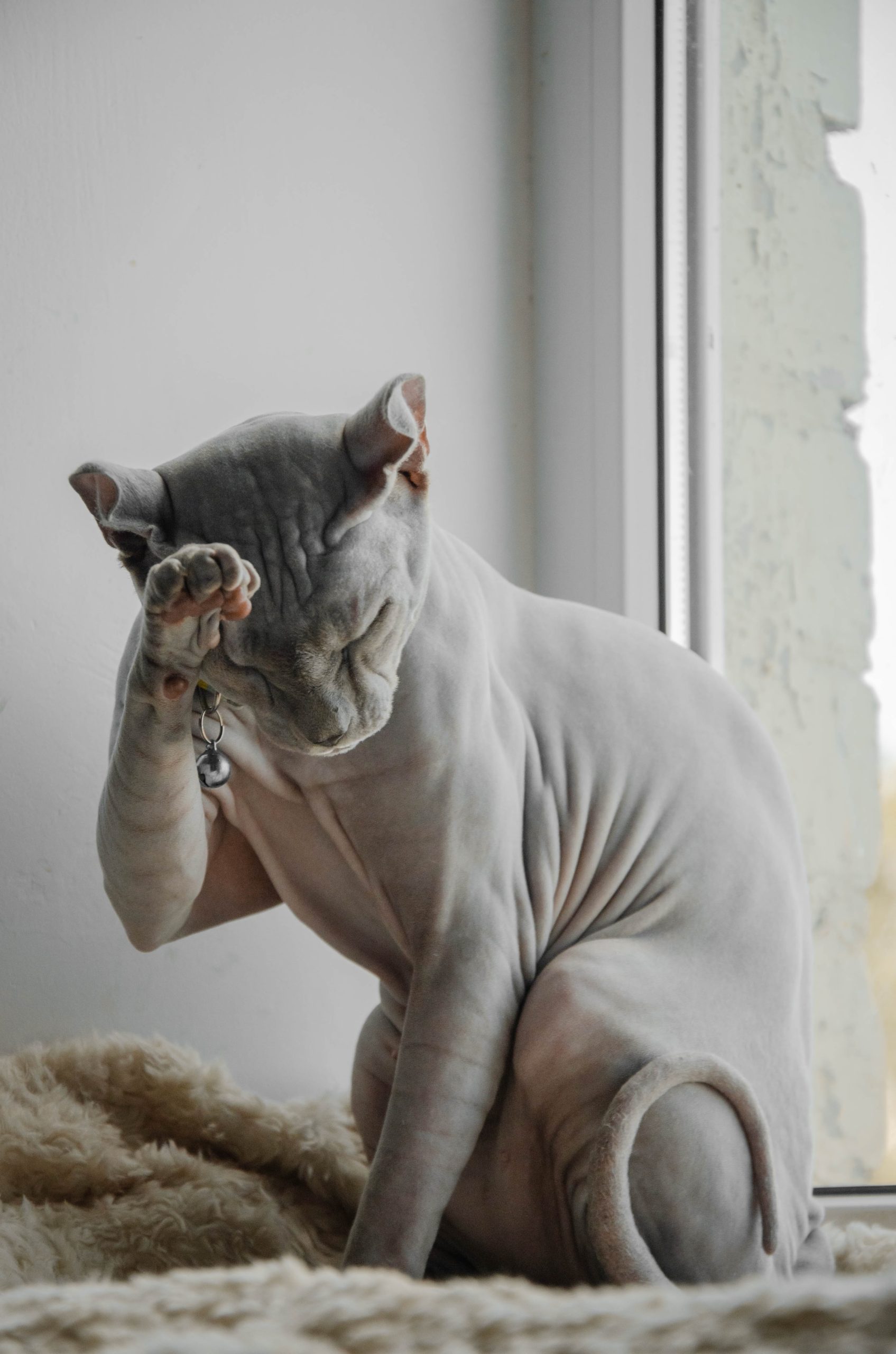
In spite of its appearance, which can sometimes seem hard because of its angular head and the absence of hair, the sphinx is described as a very cuddly cat that needs the company of its master. A real potty will follow you everywhere and be particularly affectionate. Thus, a sphynx needs to have an environment that allows it not to be alone.
If you decide to buy a kitten of this breed, be sure to be present very often at home so that it is not unhappy. This very sociable aspect is also found with other animals, especially with other cats but also with dogs. So, in case you can not ensure your presence, you can take another animal to keep him company. The Sphynx is very playful and particularly likes toys that challenge its intelligence.
3. Hygiene of the Sphynx cat
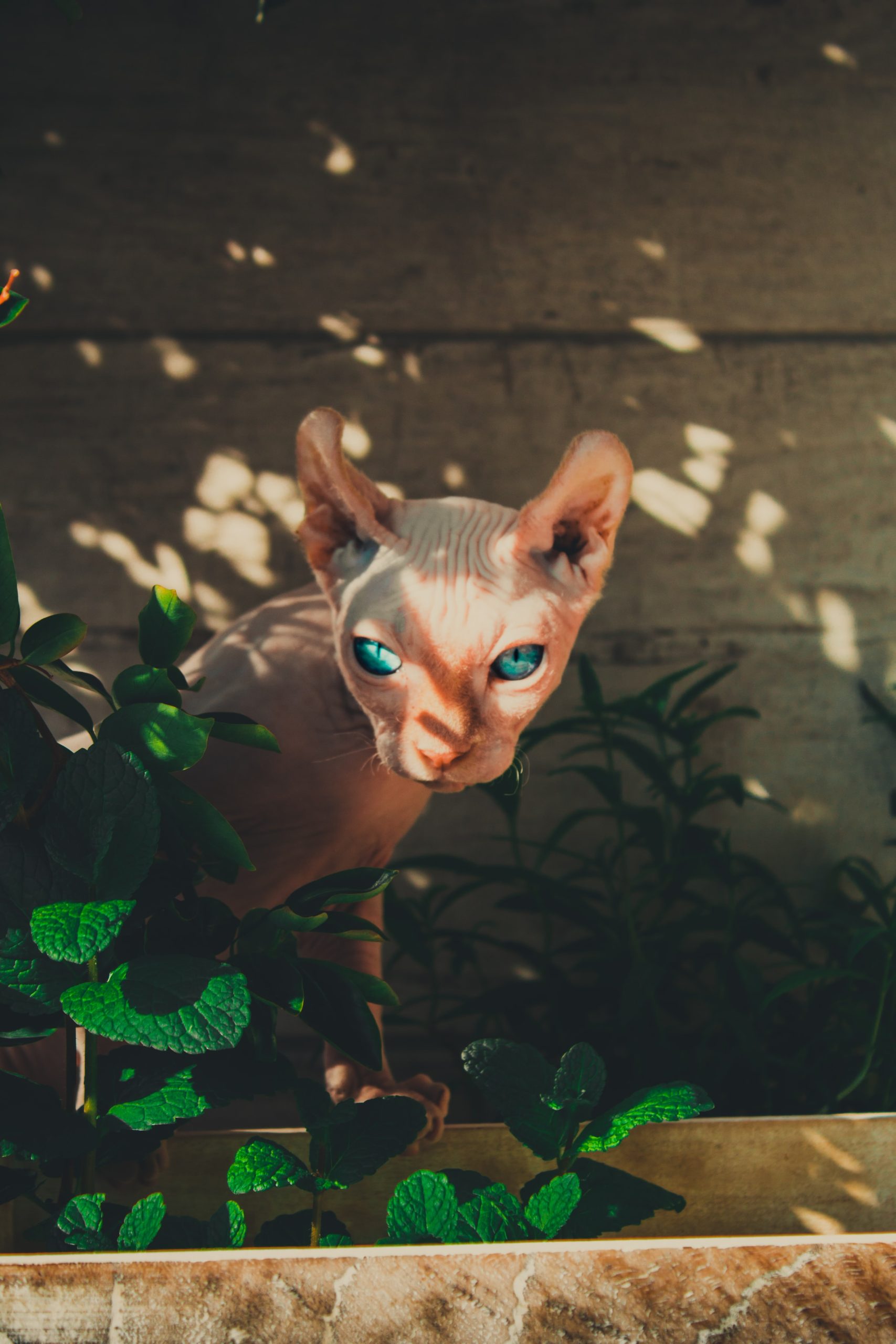
Finally, the Sphynx is a cat that likes warmth; make sure you offer them a place in the sun, on the edge of a window, for example. They will also tend to come under your plaid or T-shirt, looking for your warmth and affection.
However, the absence of hair puts these cats at risk if they are too exposed to the sun, just like us, they can then suffer burns. If your sphynx is therefore exposed for a long time to the sun, make sure to apply sunscreen on his body to protect him.
Moreover, the absence of hair causes the sphynx to produce sebum on the skin’s surface, which can leave marks that are fortunately easily washable. Some recommend washing the sphynx often, but it seems that the more a sphynx is washed, the more it produces sebum. The ideal is then to pass a wet glove on your cat’s skin to remove the excess sebum.
Finally, the absence of hair makes it more difficult for this feline to regulate its body temperature. They then have an increased need for energy compared to other cats with a coat, so they tend to eat more. As a Sphynx owner, you should ensure that your cat has enough to eat and that its food is of good quality.
4. Cat Sphynx Health
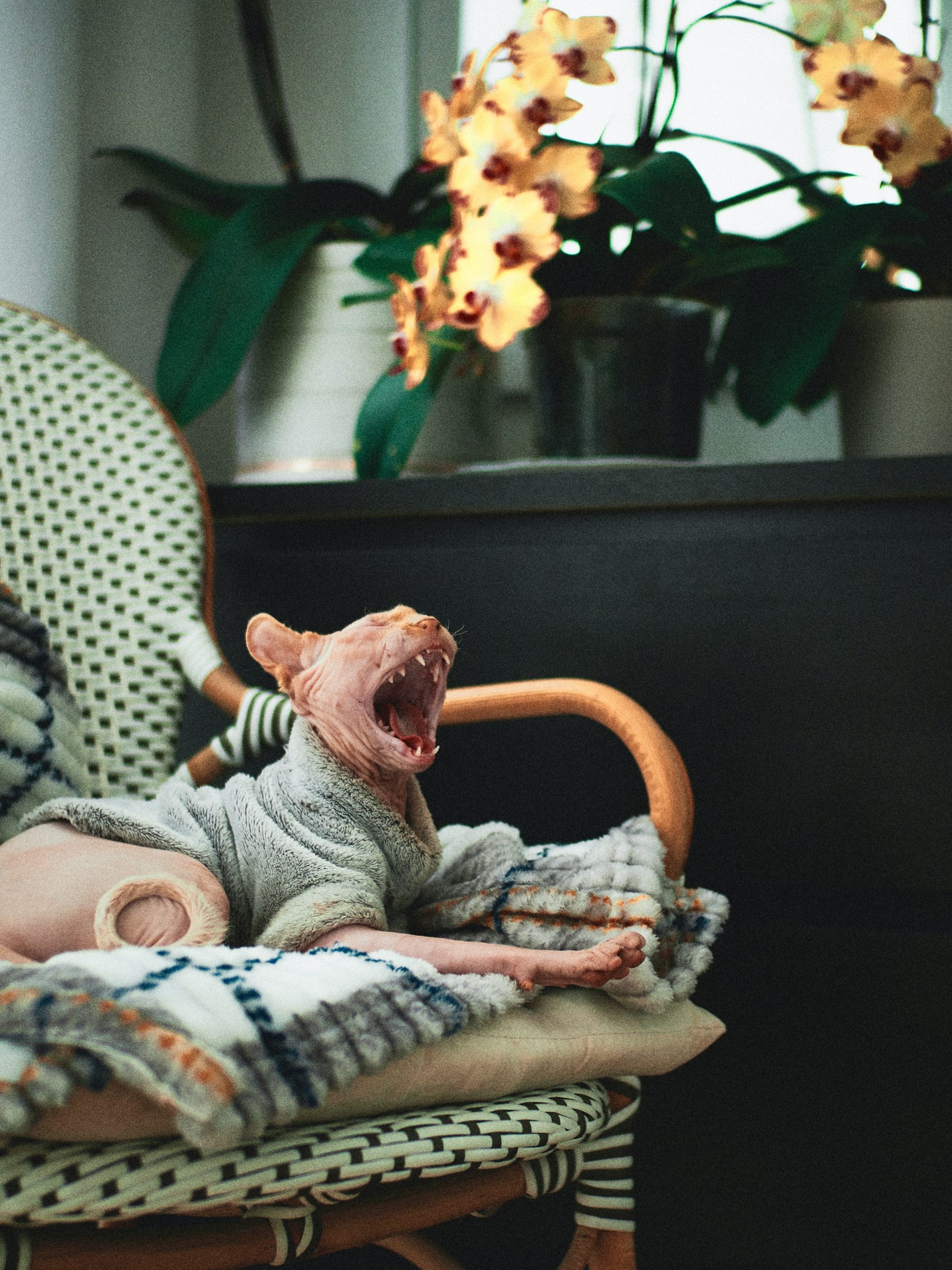
The maintenance of the Sphynx is strongly regulated by the fact that it does not have hair. However, this cat can present another health concern that should always be taken into account and detected. Indeed, this breed is unfortunately affected by hereditary heart disease: hypertrophic cardiomyopathy, known as HCM. A thickening of the heart wall characterizes the latter.
The location of this thickening is variable but mainly affects the left ventricle. This disease, affecting mainly males, is serious and can be fatal for your companion. It is very frequent within the breed, and it is necessary to screen frequently all the sphynx, particularly the reproducers, to limit the transmission of the disease.
A heart ultrasound does the screening by a veterinarian. If the disease is recognized on your cat, it will be necessary to exclude it from reproduction and set up a life treatment. Thus, the sphynx is a cat that divides opinions. While some are put off by its lack of hair and its angular head, others are captivated by this cat with a different appearance.
Sound off in the comments section below and tell us what you want to read next and if you want to read more about Sphynx cat.






1 thought on “Top 4 Things Everyone Should Know About Sphynx Cat”